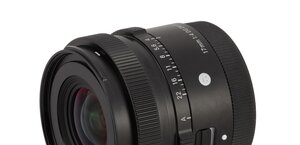Tamron AF 18-270 mm f/3.5-6.3 Di II VC LD Asph. (IF) MACRO
8. Vignetting
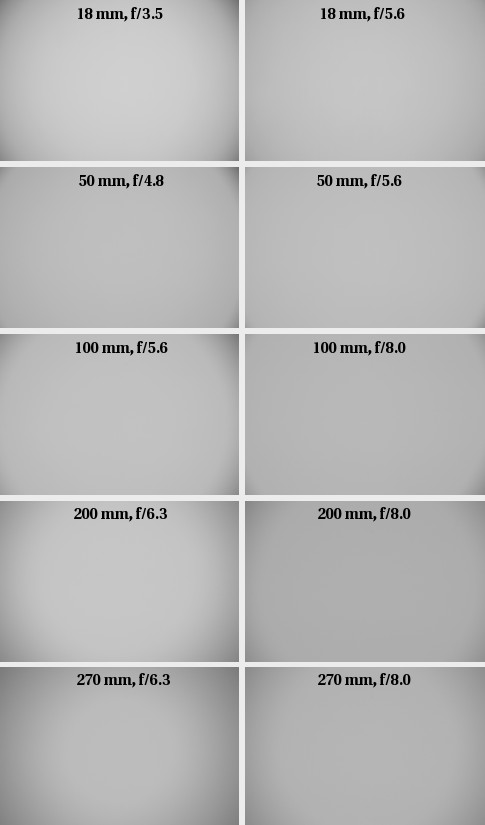
In the case of the shortest focal length and the maximum relative aperture the light fall-off in the frame corners amounts to 38% (-1.4 EV). Within the margin of error it is more or less the same as in the case of the Nikkor and a bit more than in the case of the Sigma 18-200 mm OS. The differences are so small that we might say all three devices are on the same level.
Please Support UsIf you enjoy our reviews and articles, and you want us to continue our work please, support our website by donating through PayPal. The funds are going to be used for paying our editorial team, renting servers, and equipping our testing studio; only that way we will be able to continue providing you interesting content for free. |
- - - - - - - - - - - - - - - - - - - - - - - - - - - - - - - - - - - - - - - - - - - - - - - -
On stopping down to f/4.0 the vignetting decreases to 34% and by f/5.6 it reaches 20%. By f/8.0 we get 18% and by f/11 it is still 16%. The vignetting decrease is slow, then, and even after a very significant stopping down it doesn’t want to become imperceptible.
At 50 mm focal length the vignetting at the maximum aperture is 27% (-0.92 EV). Both the Nikkor (21%) and the Sigma (17%) fared better there but the Tamron prevails over them on stopping down. By f/5.6 the brightness loss in the frame corners amounts to 18% and by f/8 it decreases to an imperceptible level of 10%.
On passing to 100 mm focal length the situation is very much alike. The light fall-off in the frame corners while wide open, which is f/5.6, reaches 28% (-0.94 EV). On stopping down to f/8 this aberration decreases to 17% and by f/11 – to 10%. Here it would be difficult to compare the tested lens’s performance to that of the Nikkor because the Nikkor is faster at the long end and in its case the maximum aperture at 100 mm is f/5.3 and the vignetting level – 31%.
At 200 mm focal length the situation doesn’t change much. The vignetting at the maximum aperture is still significant, amounting to 30% (-1.02 EV). On stopping down to f/8.0 it nears the level of 19% and by f/11 it reaches 11%.
At the maximum focal length the vignetting increases again, reaching the level of 33% (-1.16 EV). Its decrease on stopping down is also slower. By f/8.0 it is 22%, by f/11 – still 15% and only by f/16 it becomes truly imperceptible (5%).
The fact that the Tamron 18-270 mm VC fares in this category significantly worse than its older 18-200 mm brother is curious. The latter has similarly weak results only at the shortest focal length, at longer focal lengths reaching not very bothersome levels in the range of 12-18% .
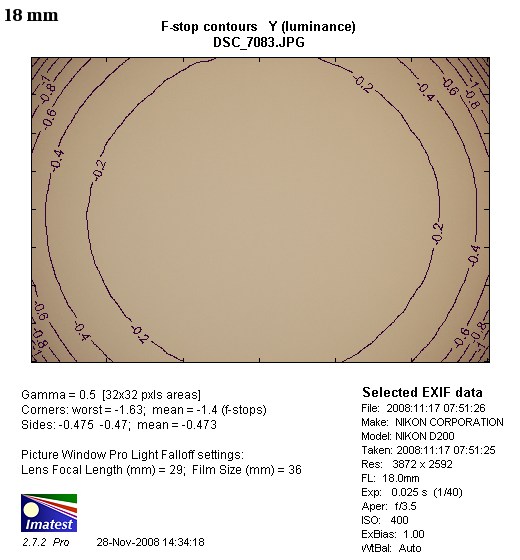 |
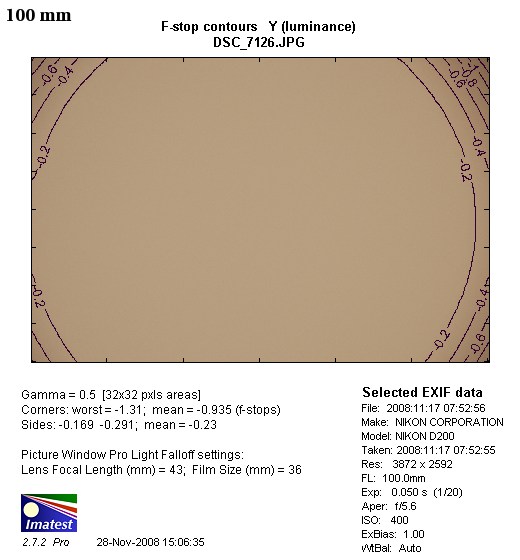 |
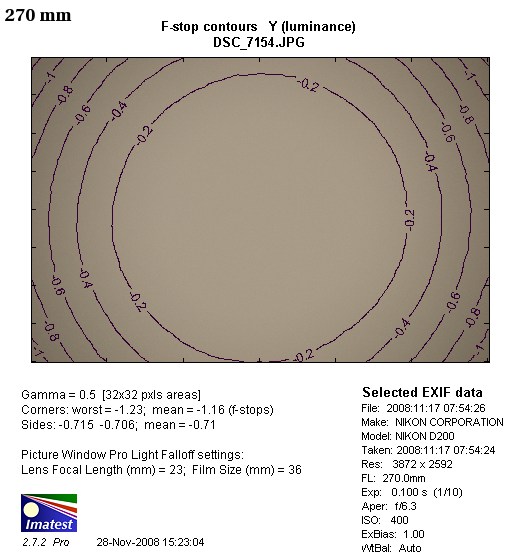 |





